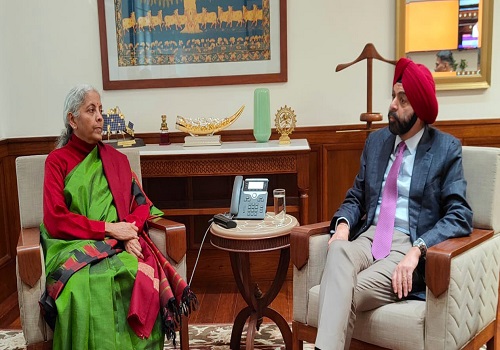Inflation risks remain skewed to upside on higher commodities` prices

Follow us Now on Telegram ! Get daily 10 - 12 important updates on Business, Finance and Investment. Join our Telegram Channel
Inflation risks for 2021 remain skewed to the upside, especially core readings, on higher commodities' prices, said DBS Group in a research report.
Accordingly, the report cited higher commodities' prices, rigidity in fuel taxes and idiosyncratic factors apart from a likely return in demand impulses as growth gains traction.
"A normal monsoon and strong domestic production are expected to cool non-imported food pressures beyond the seasonal swings."
Both WPI and CPI inflation indices have quickened in recent months, but the wholesale price index has outpaced retail inflation as the former is more correlated to global commodities.
"Wholesale price inflation also impacts manufacturers, who have absorbed most of the input price increases for now, but as recovery gains traction, part of these is beginning to get passed to the consumers,"
"While pass-through risks remain low, the monetary policy committee is likely to be concerned that supply-side pressures might be supplanted by demand-led forces as the second wave subsides and sequential growth gains momentum."
According to the report, rising inflation benefits borrowers and hurts lenders.
"Inflation-adjusted real rates have been in negative for more than a year, with the repo rate at 4 per cent eroding returns from banks' deposits and incomes, thereby incentivising a push towards riskier assets/investments."
"Real incomes are also falling, particularly in the midst of the pandemic. The bite is harder for the rural consumers where the terms of trade is turning negative as non-food inflation is rising at a faster clip than food (proxy for incomes), whilst fiscal support has been scaled back and the second wave has hit the rural areas more adversely."
Besides, it said that the RBI monetary policy committee might begin to express more concern over inflation at August's rate review.
"As the second wave ebbs and vaccination rate catches up on better supplies, the central bank is likely to outline normalisation plans for 4Q21."
"Communication will be key to ensure financial tightness doesn't front-run the intended speed of normalising policy, emphasising that normalisation does not equate tightening. Draining surplus liquidity is likely to be accompanied by a calibrated increase in the reverse repo rate from the current 3.35 per cent to 3.75 per cent -- reinstating the 25bps corridor below the repo rate."
In addition, it said that subsequent moves will include a shift in the policy stance from accommodative to neutral, before considering rate hikes.
"Rate hikes are likely to start in 2H22."










Tag News

Monthly Debt Market Update, September 2023: CareEdge Ratings





 320-x-100_uti_gold.jpg" alt="Advertisement">
320-x-100_uti_gold.jpg" alt="Advertisement">








